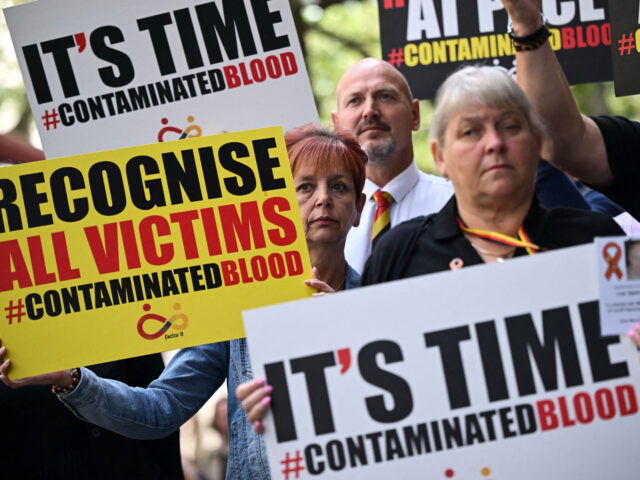via breitbart.com
LONDON (AP) – The final report of the U.K.’s infected blood inquiry will be published Monday, nearly six years after it began looking into how tens of thousands of people contracted HIV or hepatitis from transfusions of tainted blood and blood products in the 1970s and 1980s.
The scandal is widely seen as the deadliest to afflict Britain’s state-run National Health Service since its inception in 1948, with around 3,000 people believed to have died as a result of being infected with the HIV virus and hepatitis, an inflammation of the liver.
The report is expected to criticize pharmaceutical firms and medical practitioners, civil servants and politicians, though many have already died given the passage of time. It’s also set to pave the way to a huge compensation bill that the British government will be under pressure to rapidly pay out.
Had it not been for the tireless campaigners, many of whom saw loved ones die decades too soon, the scale of the scandal may have remained hidden forever.
“This whole scandal has blanketed my entire life,” said Jason Evans, who was four when his father died at the age of 31 in 1993 after contracting HIV and hepatitis from an infected blood plasma product.
“My dad knew he was dying and he took many home videos, which I´ve got and replayed over and over again growing up because that´s really all I had,” he added.
Evans was instrumental in the decision by then Prime Minister Theresa May to establish the inquiry in 2017. He said he just “couldn´t let it go.” His hope is that on Monday, he and countless others, can.
Here is a look at what the scandal was about and what the report’s impact may be.
In the 1970s and 1980s, thousands of people who needed blood transfusions, for example after childbirth or surgery, became exposed to blood tainted with hepatitis, including an as yet unknown kind that was later termed Hepatitis C, and the HIV virus.
Those with haemophilia, a condition affecting the blood´s ability to clot, became exposed to what was sold as a revolutionary new treatment derived from blood plasma.
In the U.K., the NHS, which treats the vast majority of people, started using the new treatment in the early 1970s. It was called Factor VIII. It was more convenient when compared with an alternative treatment and was dubbed a wonder drug.
Demand soon outstripped domestic sources of supply, so health officials began importing Factor VIII from the U.S., where a high proportion of plasma donations came from prisoners and drug users who were paid to donate blood. That dramatically raised the risk of the plasma being contaminated.
Factor VIII was made by mixing plasma from thousands of donations. In this pooling, one infected donor would compromise the whole batch.
The inquiry heard estimates that more than 30,000 people were infected from compromised blood or blood products via transfusions or Factor VIII.
By the mid 1970s, there was evidence haemophiliacs being treated with Factor VIII were more prone to hepatitis. The World Health Organization, which had warned in 1953 of the hepatitis risks associated with the mass pooling of plasma products, urged countries not to import plasma.

